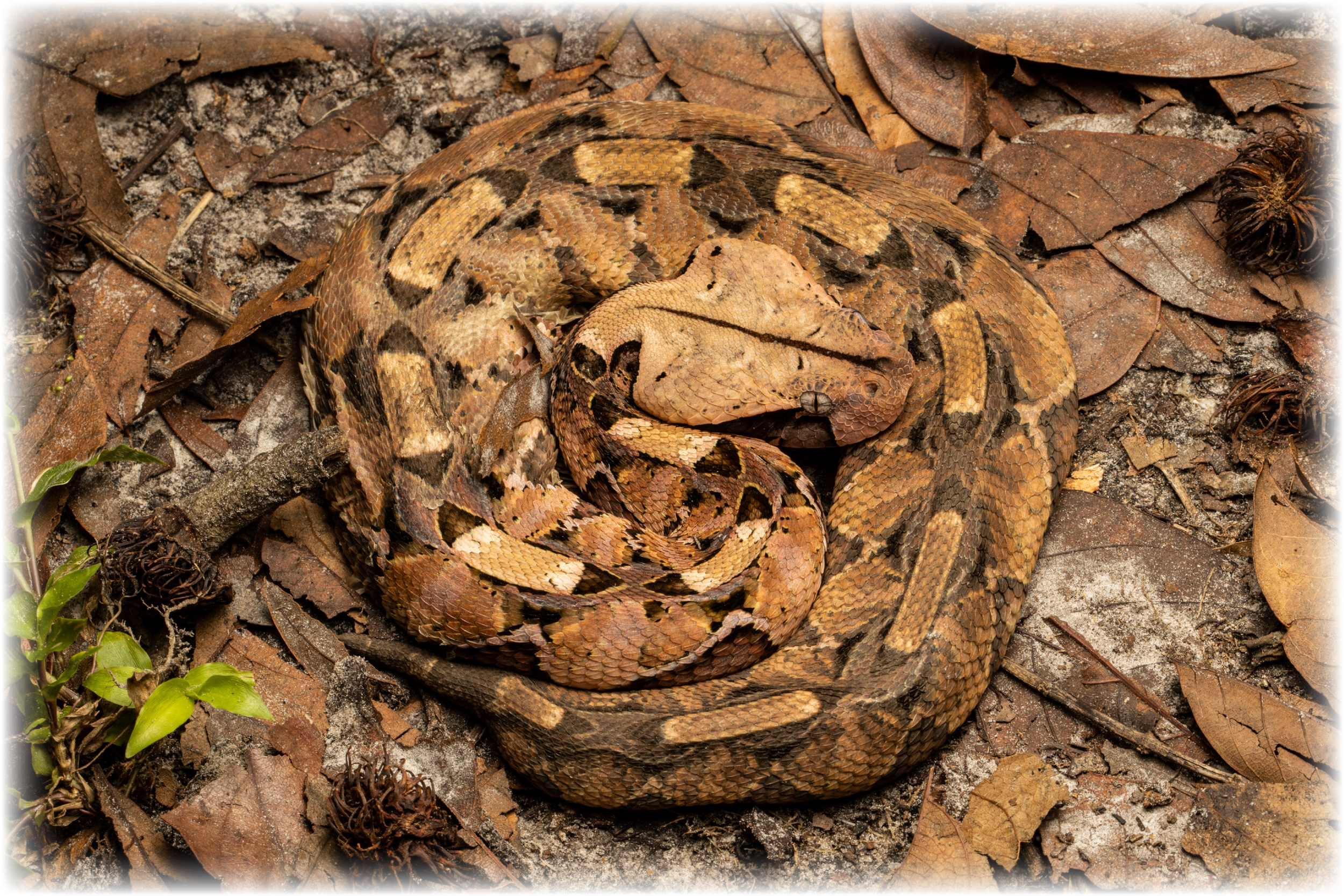
Read, Share, Give
The ASF team works diligently to address the dire need for snakebite support in tropical climates. If you enjoy the articles below, please consider making a tax-deductible donation. Recurring or one-time donations, no matter the amount, equate to life-changing support for snakebite victims and their families. If there are any topics you’d like addressed, please email us. We always love the opportunity to educate.
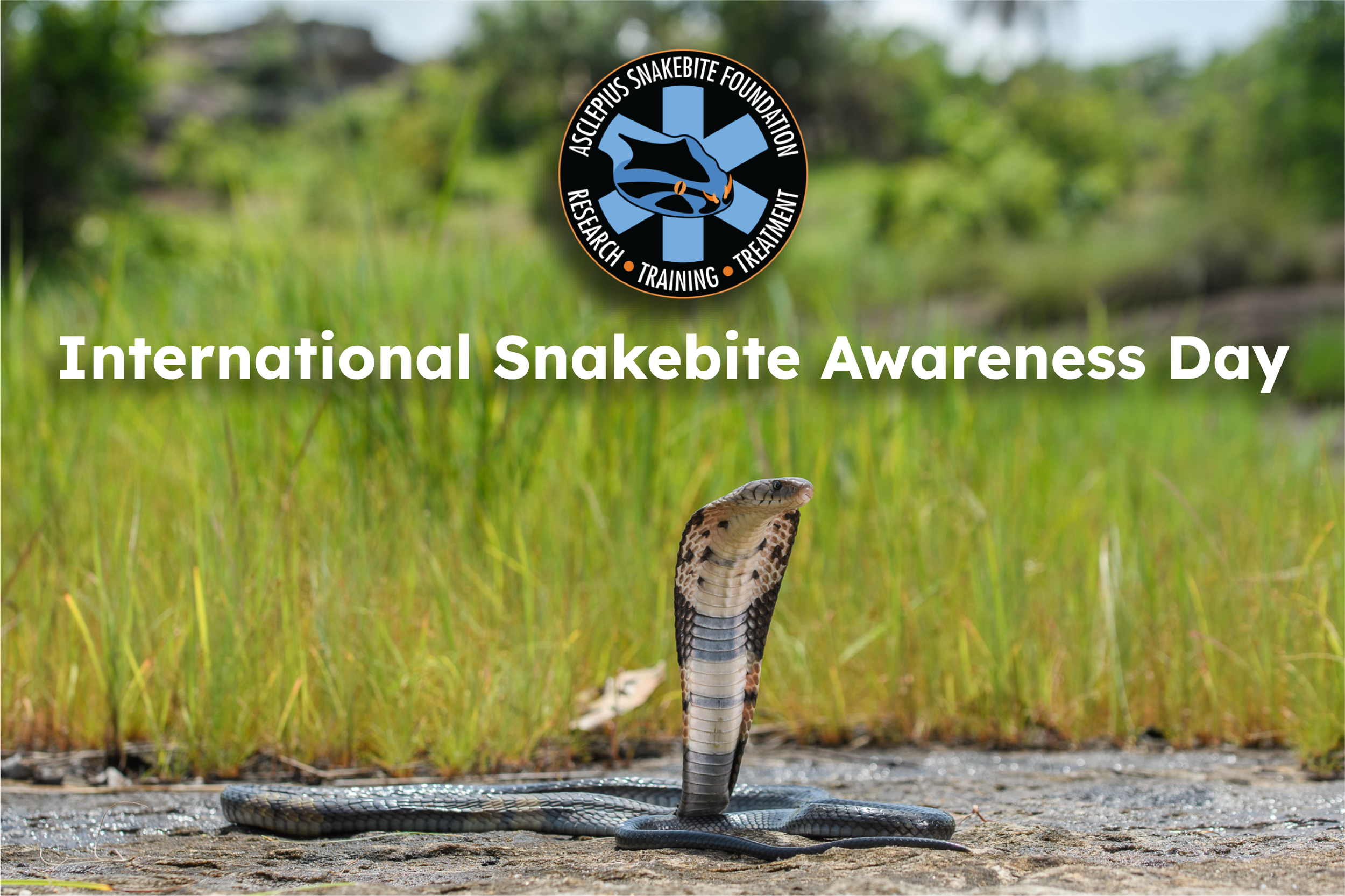
International Snakebite Awareness Day
Each year on September 19th, the world observes International Snakebite Awareness Day—a crucial initiative aimed at raising awareness of the often-overlooked problem of snakebite injuries. Every four minutes, someone in the world dies from a venomous snakebite. Despite being a significant global health crisis, snakebite treatment remains under-discussed and underfunded, particularly in developing countries. This day serves as a reminder of the urgent need for action, education, and better resources to combat this preventable tragedy. Asclepius Snakebite Foundation is committed to improving outcomes and reducing the harms caused by snakebites.
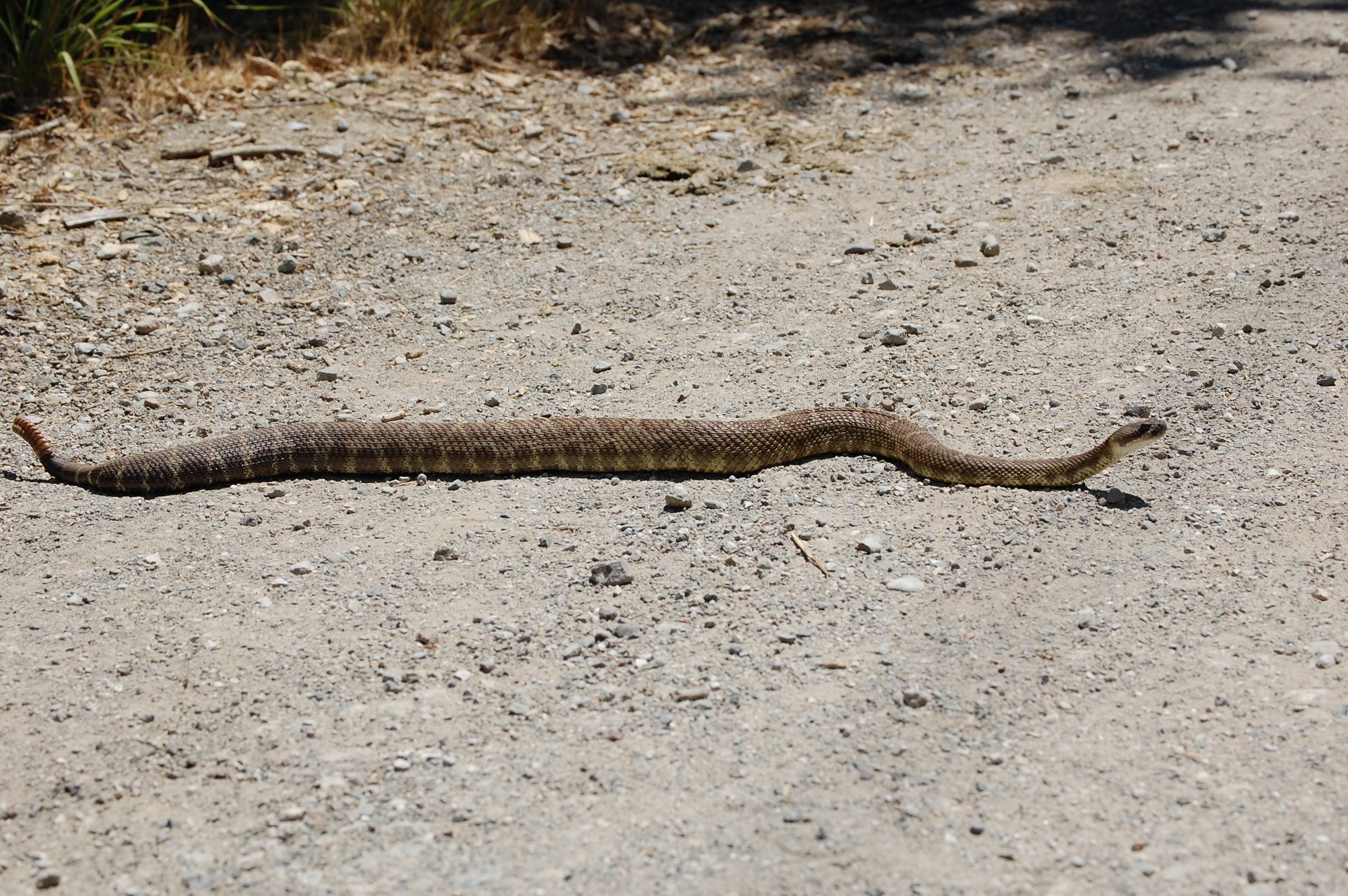
Are Baby Snakes Really More Dangerous Than Adults?
Contrary to popular belief, the bite of a baby rattlesnake is almost always far less serious than the bite of a larger adult rattlesnake. The notion that baby rattlesnakes cannot control the quantity of venom injected (referred to in the field of Herpetology as “venom metering”) is a myth that has been disproven multiple times through well-designed studies.
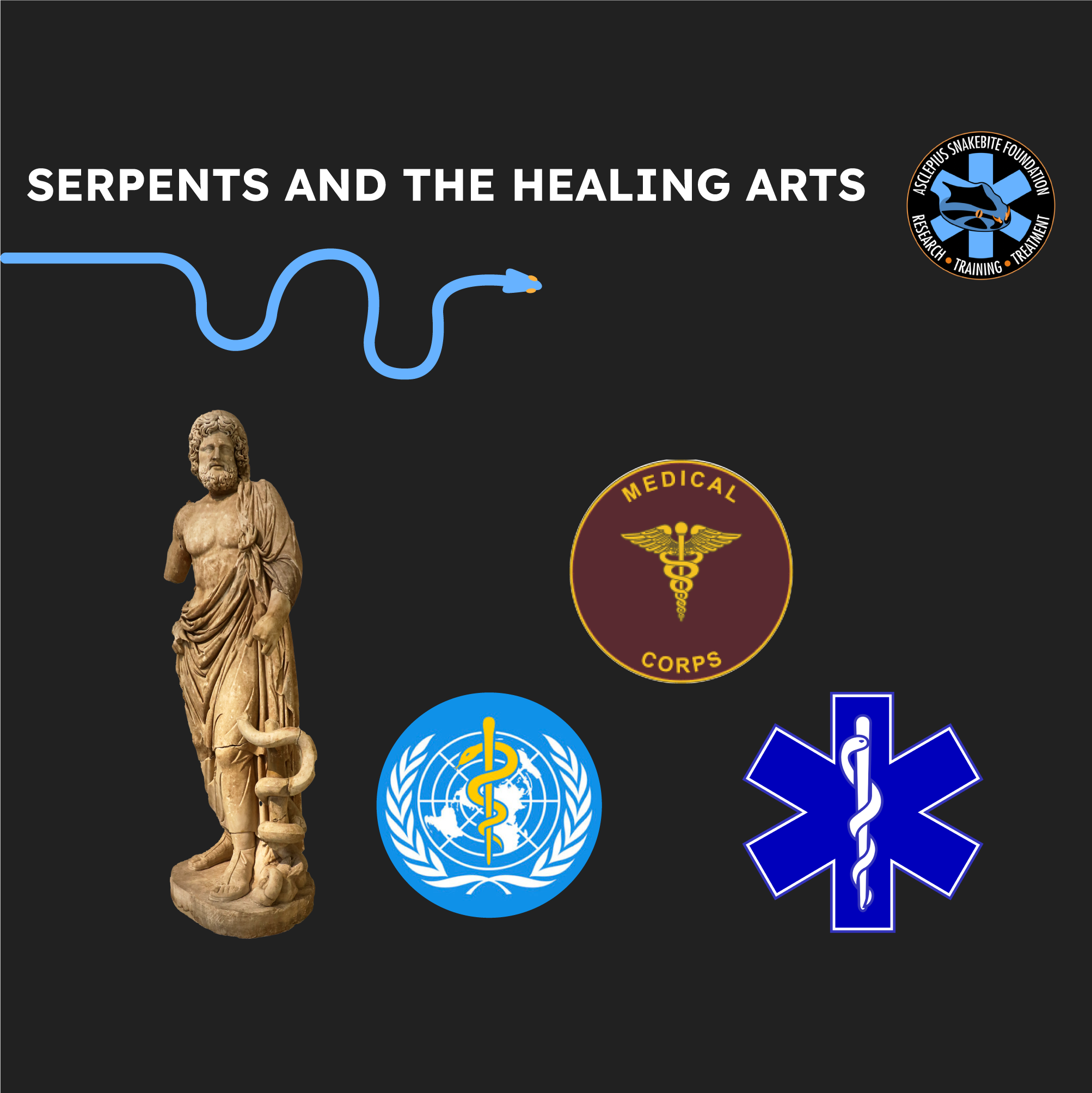
Asclepius and Snakes: Symbols of Medicine and Healing
Snakes were not always associated with fear and loathing. There has been a long association between the serpent and the healing arts. If you look closely, you can find snakes adorning all sorts of medical symbols around the world from the Star of Life that adorns modern ambulances to the emblem of the World Health Organization and US Army Medical Corps. In ancient Greek mythology and religion, Asclepius was the god of medicine and of the healing arts and carried around a staff wrapped by a serpent.

Benadryl Does Not Fix Snakebites
In short, Benadryl is not effective for snake envenomations in humans or other animals. Please stop sharing this information. Antivenom along with proper supportive care are the only effective treatments supported by peer-reviewed literature.
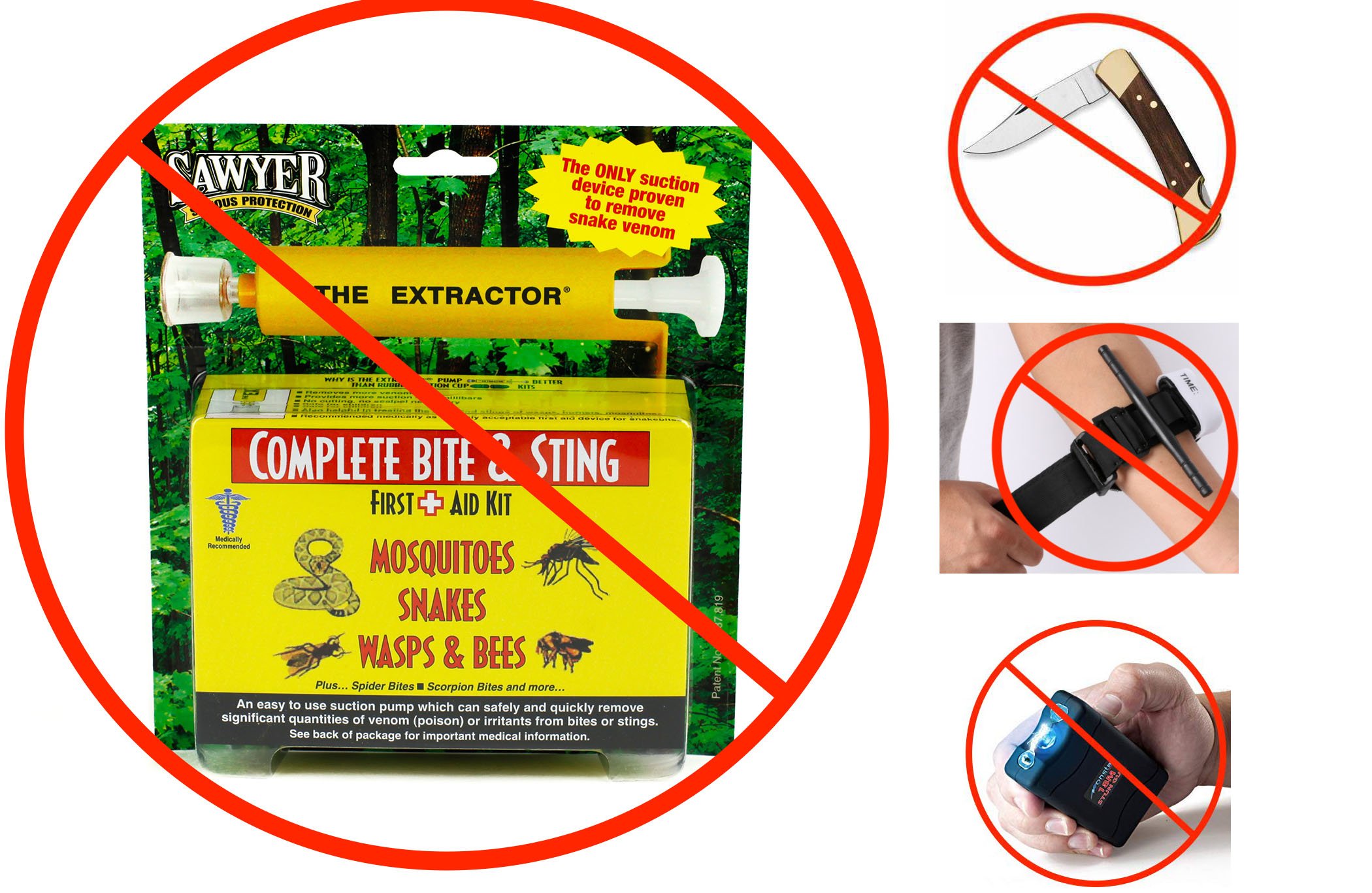
Snakebite Kits and Venom Extractors Do Not Work
As snakebite experts, we are frequently asked about first aid for snakebite patients. One of the most common questions is “Do venom extractors and other commercial snakebite kits actually help?” The short answer is no. In fact, most of the advice about snakebite first aid that has circulated over the past 500 years or so (and probably much longer) is bad information. Things like pocket knives, suction devices, tourniquets, gunpowder, vitamin C, freezing, burning, and even electrocution have been advocated for snakebite first aid over the years; the only thing all of these “treatments” have in common is a high likelihood of making the situation worse.
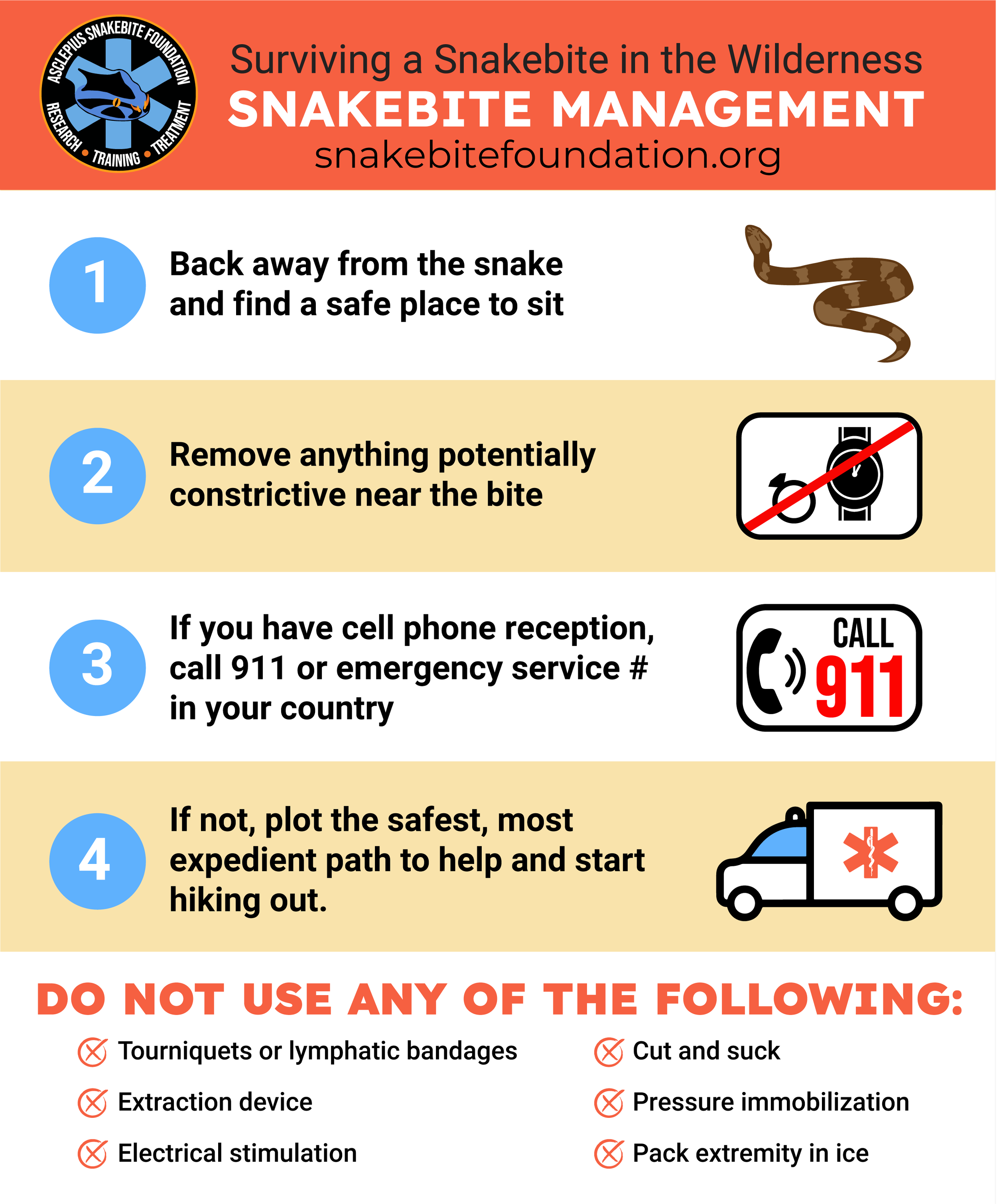
How to Survive a Snakebite in the Wilderness
FIRST AND FOREMOST, DO NOT MAKE IT WORSE!
DO NOT MAKE A TOURNIQUET, DO NOT CUT AND SUCK, DO NOT APPLY THE SAWYER EXTRACTOR OR OTHER COMMERCIAL “SNAKEBITE KITS”, DO NOT ELECTROCUTE YOURSELF WITH A STUN GUN, AND DO NOT FOLLOW ANY STRANGE RECOMMENDATIONS YOU RECEIVE FROM OTHER HIKERS ON THE TRAIL. NO FIRST AID IS OFTEN LESS HARMFUL THAN BAD FIRST AID WHEN IT COMES TO SNAKEBITES!
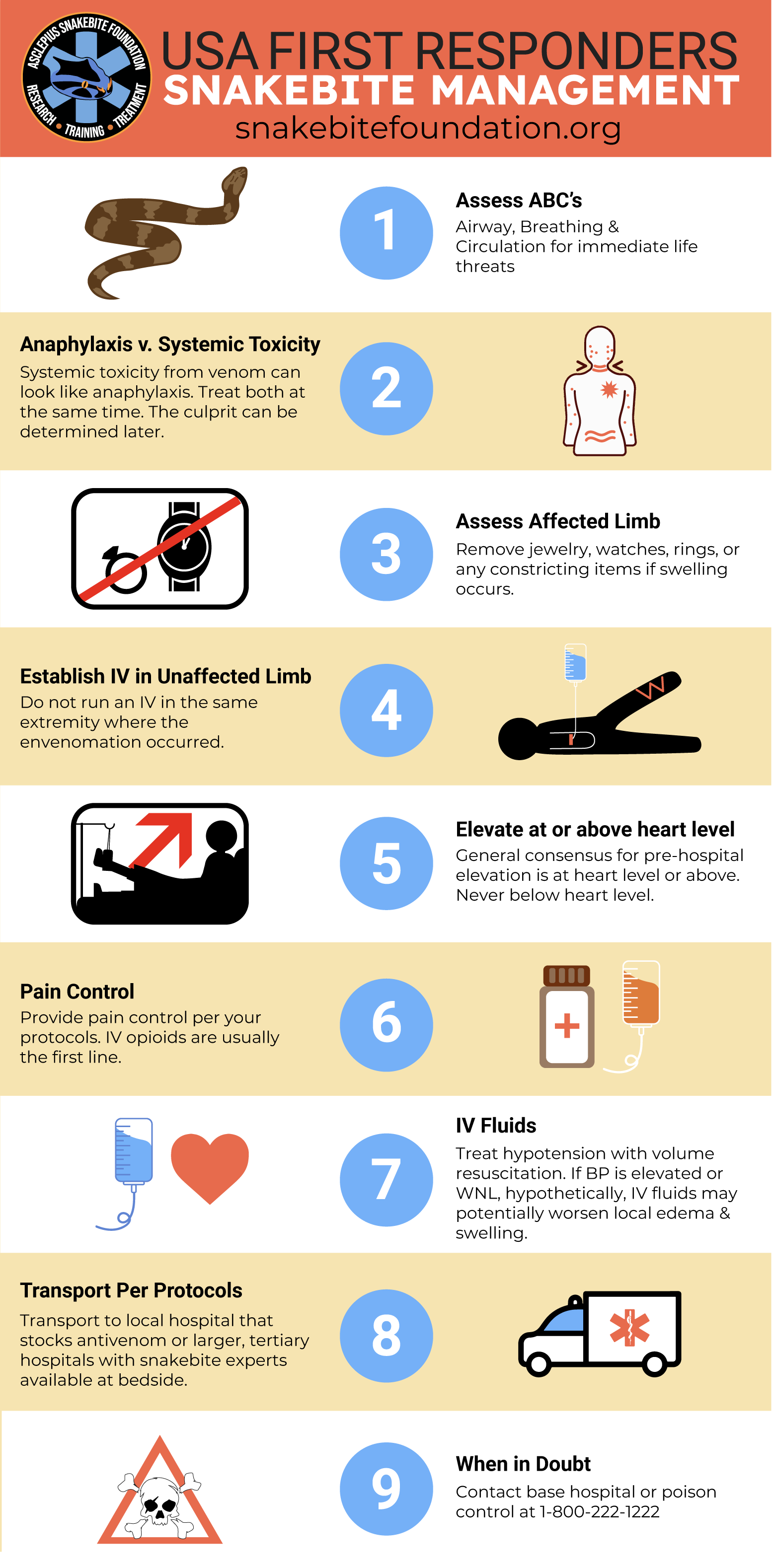
How to Treat Snakebites for First Responders in the United States
Approximately 9,000 snakebite envenomations occur yearly in the United States. Most of these envenomations are due to pit vipers, including rattlesnakes, cottonmouths, and copperheads. Fortunately, due to rapid access to medical care, deaths are rare, with only 3 to 5 occurring nationwide each year. Our emergency medical system is the first link in the chain of treating patients. In comparison to many areas of the world, the U.S. has an advanced system of highly-trained EMTs and paramedics skilled in the prompt assessment, stabilization, and transport of critically ill patients.

Veterinary Antivenom Brands and How They Work
Many people ask about the antivenoms that are used for envenomations in dogs and cats, so here is your immunology lesson for the week.

Veterinary Experts Do Not Recommend the Rattlesnake Vaccine
Veterinary experts in snakebite medicine do not recommend the rattlesnake vaccine

How is Antivenom Made?
Snakebites are a global health crisis, affecting millions of people every year. Venomous snakes can deliver a lethal dose of venom with a single bite, making immediate treatment a matter of life or death. Thankfully, immunology pioneers in the 1890’s were the first to develop snake antivenom…and we still use the same process today!

What to Expect When You’re Expecting…. And Snakebitten
Snakebites can lead to serious consequences regardless of the victim's age or health, pregnant women face additional challenges due to the potential harm that venomous toxins can inflict on fetal development. It is crucial to address snakebite treatment promptly and efficiently to minimize risks.

Snakebite Treatment: Past, Present, and Future
Snakebites have challenged humans for centuries. Without a proper understanding of how snake venoms worked, physicians used the same ineffective treatments through much of history. Antivenoms are now manufactured all over the world to treat all kinds of snakebites and scientists are creating new potential therapies with the goal of more effectively treating all snakebites.
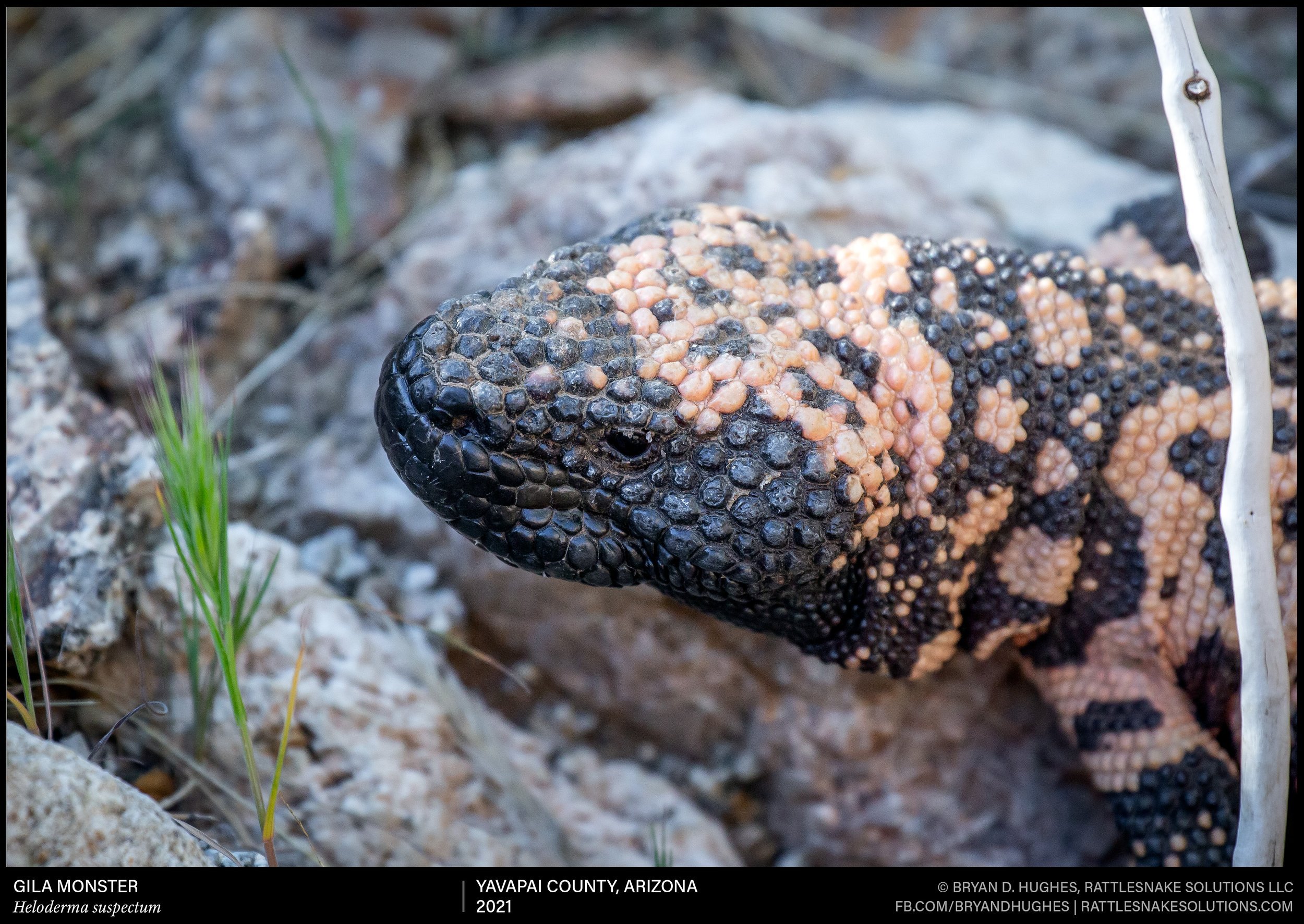
Gila Monster Bites and Venom
Gila monsters are venomous lizards, native to the southwestern United States and northwestern Mexico. Recently, a Colorado man succumbed to a bite from a captive Gila monster. Historic data regarding deaths from Gila monster bites are scant and poorly documented. Victims of Gila monster bites commonly report excruciating pain lasting hours to days, accompanied by symptoms such as vomiting, diarrhea, sweating, and even loss of consciousness. There is no antivenom due to the rarity of fatalities, but prompt medical attention is crucial following a bite, involving tetanus vaccination, pain management, and supportive care.
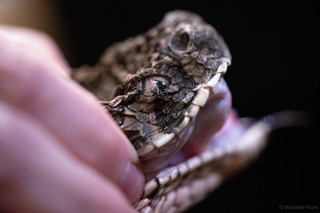
Exploring Viper Venoms
Venomous snakes, particularly vipers, have long captured the imagination of humanity. From ancient myths to modern scientific study, these creatures have intrigued and sometimes terrified us. Central to their fearsome reputation is their venom – a complex cocktail of bioactive molecules designed for subduing prey and defending against threats. Here, we delve into the fascinating world of venom components in vipers, exploring their diversity, functions, and potential applications.

Snake Antivenoms: Understanding Key Terms
Snakebite is a global health concern, and antivenoms are crucial in mitigating their impact. In this post, we'll unravel the complexities of snakebite antivenoms, breaking down key terms like monovalent, polyvalent, specific, paraspecific, and lyophilized to provide a clearer understanding.
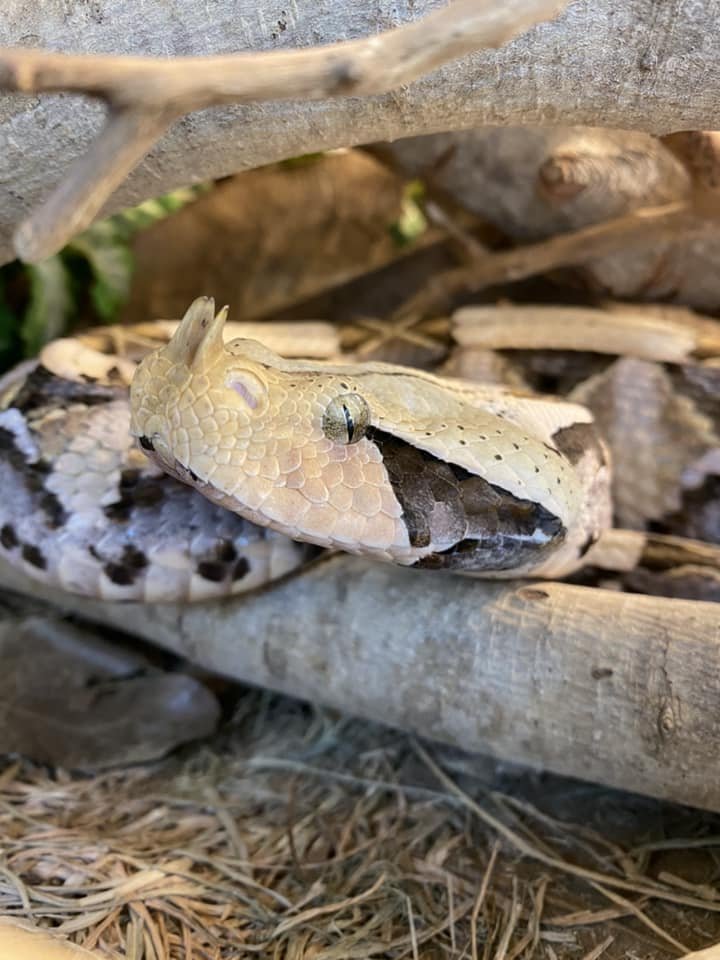
The Push for Exotic Antivenoms in the United States
Historically, the responsibility of stocking antivenom for exotic snake bites has fallen on the shoulders of local zoos. When a keeper is bitten, the zoo would generously donate antivenom to the patient. However, this approach not only strains the zoos, requiring time to replace antivenom and putting keepers at risk, but it also poses a danger to the patient due to the time-consuming logistics of organizing and executing antivenom transportation. In cases of envenomation, every minute is crucial.

